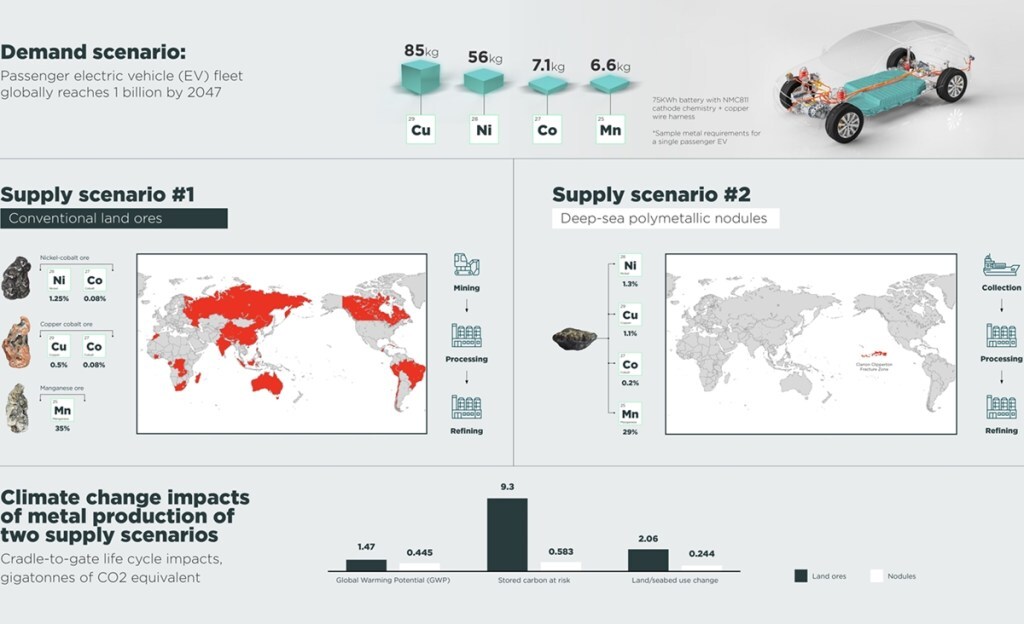As the world rushes to replace internal combustion engines with electric vehicle batteries, a study suggests that polymetallic rocks found on the deep-ocean floor can be a source for hundreds of millions of tonnes of EV battery metals with dramatically lower climate impact than mining ores on land. The study published in the Journal of Cleaner Production does a comparative life cycle assessment of battery sources, quantifying the direct and indirect emissions, disruptions to carbon sequestration services realised in the mining, processing, and refining of battery metals.
The carbon intensity of producing metals like nickel led to mounting interest in finding low-carbon metal sources, along with a plea by Tesla’s Elon Musk that promised “a giant contract” for nickel mined “efficiently and in an environmentally sensitive way.”
While electric car makers like Tesla and Polestar lead the movement for bringing transparency throughout the automotive industry and reveal the lifetime carbon footprints of their cars, the new study goes beyond considering carbon emissions from human operations to look at the disruption of ecosystem carbon sequestration services caused by changes in land and seabed used to produce battery metals.
The paper called ‘Life Cycle Climate Change Impacts of Producing Battery Metals from Land Ores versus Deep-Sea Polymetallic Nodules’ starts with a demand scenario of producing four metals (nickel, cobalt, manganese, copper) to supply one billion 75KWh EV batteries with cathode chemistry of NMC 811 (80% nickel, 10% manganese, 10% cobalt).
Also read: India will be global manufacturing hub for electric vehicles in five years: Nitin Gadkari
It then compares the climate change impacts of supplying these four metals from two sources: conventional ores found on land and polymetallic rocks with high concentrations of four metals in a single ore, found unattached on the seafloor at 4-6 km depth.
The study found that producing battery metals from nodules can reduce active human emissions of CO2e by 70-75%, stored carbon at risk by 94%, and disruption of carbon sequestration services by 88%.




















